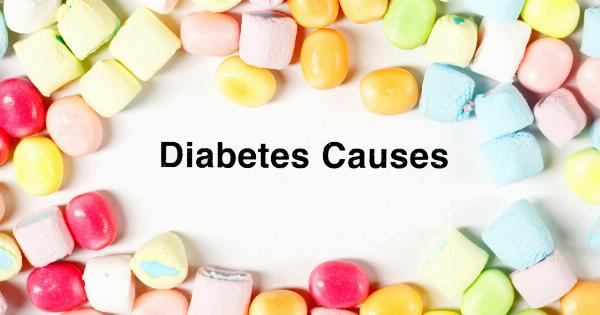Fatty liver disease, also known as hepatic steatosis, is a condition characterized by the accumulation of excess fat in the liver cells.
This condition is a growing concern worldwide, affecting millions of people and leading to various complications if left untreated. While fatty liver disease can affect both men and women, there is a noticeable gender gap when it comes to its prevalence, risk factors, and progression.
In this article, we will explore the gender-specific aspects of fatty liver disease in women and shed light on the reasons behind this disparity.
1. Understanding Fatty Liver Disease
To comprehend the gender gap in fatty liver disease, it is crucial to have a clear understanding of the condition itself.
Fatty liver disease is broadly categorized into two types: alcoholic fatty liver disease (AFLD) and non-alcoholic fatty liver disease (NAFLD). As the names suggest, AFLD is primarily caused by excessive alcohol consumption, while NAFLD is associated with factors such as obesity, diabetes, metabolic syndrome, and poor lifestyle habits.
2. Gender Disparity in Fatty Liver Disease
Multiple studies have highlighted the existence of a gender gap in the prevalence of fatty liver disease. Research consistently demonstrates that women are more prone to developing NAFLD compared to men.
In fact, studies have shown that women have a 2-3 times higher risk of developing NAFLD than their male counterparts.
3. Hormonal Factors and Fatty Liver Disease
Hormonal factors play a significant role in the gender disparity observed in fatty liver disease. Estrogen, the primary female sex hormone, appears to have a protective effect against liver fat accumulation.
However, hormonal changes that occur during menopause, such as a decline in estrogen levels, contribute to an increased risk of fatty liver disease in postmenopausal women. This suggests that hormonal influences can partially explain why women are more susceptible to NAFLD.
4. Obesity and Body Fat Distribution
Obesity is a major contributing factor to the development and progression of fatty liver disease. It is well established that women tend to have a higher percentage of body fat and different fat distribution patterns compared to men.
Women often exhibit higher levels of visceral fat, which is fat stored around the organs in the abdominal cavity. Visceral fat is more metabolically active and releases inflammatory substances that can promote liver fat accumulation.
Therefore, the higher prevalence of obesity and visceral fat in women may be a key factor in the gender disparity of fatty liver disease.
5. Insulin Resistance and Metabolic Factors
Insulin resistance, a condition in which the body’s cells become less responsive to the hormone insulin, is closely linked to NAFLD.
Studies have shown that women generally have lower levels of insulin sensitivity compared to men, putting them at a higher risk of developing insulin resistance and subsequent liver fat accumulation. Additionally, certain metabolic factors, such as high triglyceride levels and low levels of high-density lipoprotein (HDL) cholesterol, are more common in women and further contribute to the gender gap observed in fatty liver disease.
6. Polycystic Ovary Syndrome (PCOS)
Polycystic ovary syndrome (PCOS) is a hormonal disorder that affects many women of reproductive age. Women with PCOS experience a range of symptoms, including insulin resistance, obesity, and hormonal imbalances.
PCOS has been associated with an increased risk of developing NAFLD. The interplay between PCOS and fatty liver disease adds complexity to the gender gap, as PCOS disproportionately affects women and contributes to their higher susceptibility to the condition.
7. Pregnancy and Gestational Fatty Liver Disease
Pregnancy-related conditions can also lead to a specific form of fatty liver disease known as gestational fatty liver disease (GFLD).
GFLD typically occurs during the third trimester of pregnancy and can be life-threatening for both the mother and the unborn child. Although rare, GFLD has a female predominance due to the unique metabolic changes that occur during pregnancy. Hormonal alterations, genetic factors, and pre-existing liver conditions can further increase the risk of GFLD in pregnant women.
8. Sociocultural Factors and Gender Disparity
The gender gap in fatty liver disease may also be partially attributed to sociocultural factors. Traditionally, men have been more likely to engage in heavy alcohol consumption, which is a well-known risk factor for AFLD.
On the other hand, women may be more susceptible to the metabolic risk factors associated with NAFLD due to societal pressures, body image issues, and differences in dietary choices. These factors, combined with genetic predispositions, contribute to the higher prevalence of fatty liver disease in women.
9. Diagnosis, Treatment, and Prevention
Regardless of gender, early diagnosis, treatment, and prevention strategies for fatty liver disease are crucial.
Diagnosis usually involves a combination of medical history evaluation, physical examination, blood tests, imaging studies (such as ultrasound), and sometimes liver biopsy. Treatment options vary depending on the underlying cause and severity of the condition, including lifestyle modifications, weight loss, dietary changes, medication, and, in severe cases, liver transplantation.
10. Closing Thoughts
The gender gap observed in fatty liver disease highlights the need for further research and awareness regarding the unique challenges faced by women.
Hormonal factors, differences in body fat distribution, insulin resistance, PCOS, pregnancy-related conditions, and sociocultural influences all contribute to the higher prevalence and risk of fatty liver disease in women. By understanding these factors, healthcare providers can develop gender-specific strategies for prevention, diagnosis, and treatment to mitigate the impact of fatty liver disease in both men and women.




























